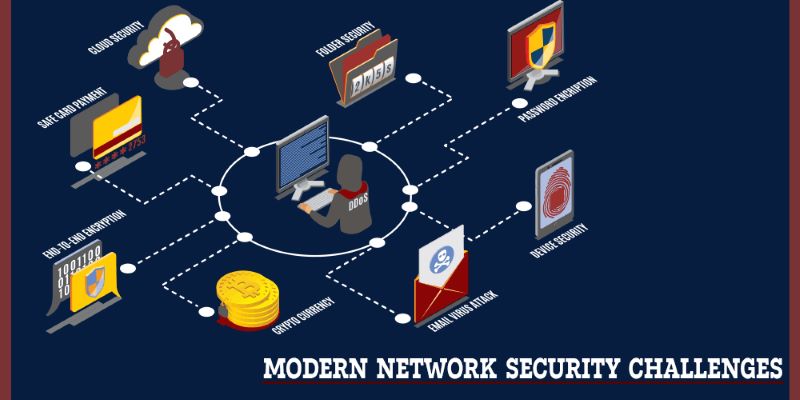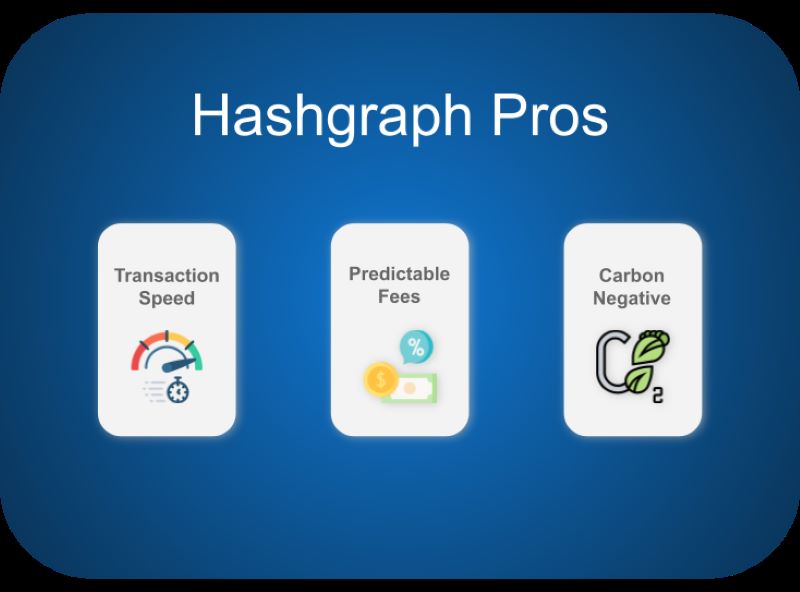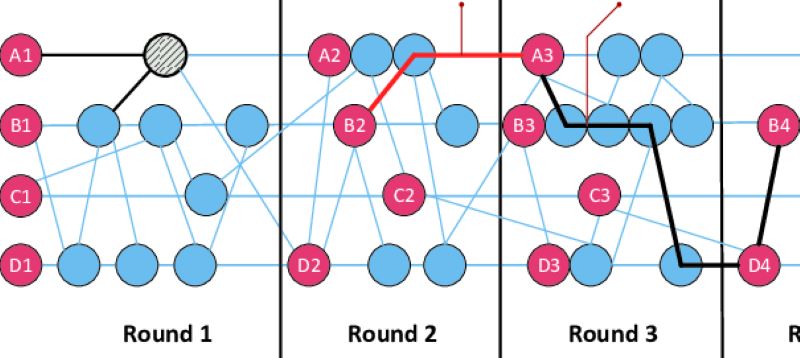Imagine a world where digital transactions are faster, fairer, and jam-packed with rock-solid security. That dream is turning into reality, thanks to hashgraph consensus. This powerhouse tech isn’t just a tiny tweak to what we know—it’s a giant leap forward. Think of it as the clever new kid on the block; it doesn’t just play the game, it changes it. Dive in as I peel back the layers of this game-changer, leading you through the maze of gossip protocols and virtual voting that puts the ‘super’ in super-secure transactions. Ready to see how hashgraph is shaking up the digital world? Buckle up, because we’re about to dive deep!
Understanding the Hashgraph Consensus Mechanism
Gossip about Gossip: The Core of Hashgraph’s Speed
Imagine a room full of people, each sharing the latest news with one another. This is how Hedera Hashgraph’s gossip protocol works. Every member shares what they know to all others. Soon, everyone gets the full story. This is the secret to hashgraph’s speed.
The gossip protocol used in hashgraph is why it’s fast. It’s like a game of telephone but more advanced. Each node passes on data to a few others. Then, those nodes pass it on, and so on. Quickly, all nodes have the full picture.
In Hedera Hashgraph, each piece of data a node gets is a piece of the transaction story. This data gets added to their own history. So, a clear picture of all transactions comes through. This happens much faster than in blockchain. That’s because blockchain adds data one block after another. In hashgraph, transactions link side by side, moving things along quicker.
This tying together of all transactions makes a DAG – a Directed Acyclic Graph. It’s a web of transactions that can’t go backwards, only forwards. This is key since it stops anyone from trying to double-spend or undo a transaction. That’s why Hedera network can be both quick and safe.
Virtual Voting: Ensuring Fairness and Security
Now, how does Hedera Hashgraph choose which transactions are okay to add to the public ledger? This is where virtual voting comes into play. It’s a vote without the actual action of voting.
In the past, nodes had to vote on the order of transactions. This took a lot of messages and time. With virtual voting, it’s different. Nodes don’t send votes across the network. They just know what the vote would be because of the gossip about gossip.
The gossip history lets each node see how others would vote. They can then use this history to decide the order of transactions. This process is part of what makes Hedera so quick. It also stops bad players from gaming the system.
Having this kind of virtual voting leads to byzantine fault tolerance. What’s that? It means even if some nodes fail or act badly, the network can still work. The rest of the nodes reach agreement and keep everything secure.
It’s like a group project where everyone needs to agree before moving forward. But instead of one bad apple spoiling the bunch, everyone else manages to get the work done right. Done, without letting the bad apple mess things up.
This voting method is also fair. It’s because the order of transactions reflects when they actually happened. Unlike some blockchain systems where miners might choose orders based on fees. This fairness is part of what sets hashgraph apart.
In a nutshell, hashgraph technology makes digital transactions fast, fair, and secure. Hedera Hashgraph does this with a clever gossip protocol and virtual voting. Both steps skipping the drawn-out process found in blockchain. This is a game-changer, not just for cryptocurrency but for any sort of digital trade. It’s shifting the entire scene of how we think about distributed ledger technology. And that’s just the start.
Comparing Hashgraph to Traditional Blockchain
The Efficiency Gains of DAG over Chain Structures
Picture a network where everyone talks to each other. That’s Hedera Hashgraph for you. Different from old blockchains, Hedera uses a neat trick called DAG. In simple words, DAG lets data flow one way, like rivers joining a stream. This means no waiting in line! Every bit of data just zooms ahead. This is why hashgraph technology is speedy. It’s like everyone in town gossiping at super speed, sharing news far and wide. Because of DAG, Hedera needs less power too. So, when we talk about hashgraph efficiency, think of quick chats and less energy spent – a total win-win!
Implications of Byzantine Fault Tolerance in DLTs
Now let’s chat about a tough idea – Byzantine fault tolerance. In any team, trust is key. For distributed ledger technology (DLT), it’s the same thing. You want to know everyone plays fair, right? Byzantine fault tolerance is about being sure. Even if some players try to cheat, Hedera keeps the game honest. With virtual voting, Hedera checks what the majority agrees on without needing heavy math. So, it’s like having an invisible referee that’s always right. This builds a secure and true network where everyone knows the score. Loyalty and honesty? Hedera’s got them in the bag. And for you and me, that means safer dealing with our digital cash and stuff.
So, comparing Hedera to the first blockchains is like bikes against race cars. And as more folks get why this matters, they see Hedera is set to lead the race.
Hedera Hashgraph: Fueling a New Paradigm in Cryptocurrency
The Role of HBAR in the Hedera Ecosystem
HBAR tokens power the Hedera network. They make things happen. People use HBAR to pay for transactions. Developers use it in their apps. It keeps the network safe. When users hold HBAR, they can even help make decisions for Hedera. This token has a big job.
It’s like the fuel in a car. Without fuel, a car won’t run. Without HBAR, Hedera won’t work. Holding HBAR is like having a say in where the car drives. It’s important.
HBAR is not just digital money. It’s a key to new technology. It’s a way into a fast and secure system. The system is built by folks who know their stuff. And they’re serious about keeping it safe from attacks.
The Hedera team is always working to make HBAR better. They want everyone to use it easily. It’s a token for today and tomorrow. With HBAR, buying, selling, and trading can happen in a snap. That’s good stuff.
Smart Contracts and API Integration in the Hedera Network
Smart contracts on Hedera are agreements that run by themselves. This is cool because you don’t need a middle man. Imagine signing a deal that works out on its own. That’s what smart contracts do.
But there’s more. Developers can hook apps up to Hedera with APIs. This is like giving apps a secret door to Hedera’s tools. All the apps can talk to each other. This is big. It breaks down walls between different technology.
APIs make sure apps play nice on Hedera. They let apps tap into the speed and trustworthiness of hashgraph. You want your app to be fast and safe, right? With Hedera, it can be.
These smart contracts and APIs are changing things. They’re making it possible for everyone to be part of this new world. From games to finance, Hedera is the place to be.
Smart contracts aren’t just for computer whizzes. They’re for anyone with a great idea. And with Hedera, they work faster than ever. Are you ready to join in? Hedera makes it easy.
APIs are a handshake between your app and Hedera’s power. This handshake is strong. It’s a promise of fast, fair, and secure tech. It’s something to get excited about. Hedera is shaping the future, and APIs are a big part of that.
This is just the start. Hedera’s got big plans. With HBAR and smart tech, anything’s possible. So, what’s next? Let’s wait and see. It’ll be a fun ride.
Scaling the Future with Hedera Hashgraph’s Innovations
Enhancing IoT and Data Storage through Hashgraph
Hashgraph technology is a game-changer for the Internet of Things or IoT. Let me tell you why. IoT devices talk to each other a lot. They collect and share data, like your fridge knowing when you’re out of milk. Traditional systems can’t handle all this chatter without getting slow or breaking down. However, with Hedera Hashgraph, it’s a whole new ball game. These devices can share info quickly and reliably.
Imagine millions of devices communicating at once. With blockchain, this talk would take a long time and use up lots of energy. But hashgraph’s smart way of spreading info, called the gossip protocol, changes that. It’s like a super-efficient rumor mill where each device quickly tells a few others the news. So, the message moves like lightning across the network.
This method also helps to store data safely. In a hashgraph, each piece of stored data is linked in a way that’s tough to mess with. The info has a clear history, so you can trust where it’s been and who’s seen it. That way, businesses can make sure the data hasn’t been tampered with.
Addressing Consensus Latency and Network Security Challenges
Now, let’s tackle a big tech term: consensus latency. This is about how long it takes for all parts of a network to agree on what’s true. For example, did the transaction really happen? With some tech, consensus can be slow. This is a problem, especially when fast decisions are needed. But the hashgraph consensus is different. Remember how we talked about gossip and virtual voting? They work together to make agreement super fast without every device talking to each other.
Virtual voting lets devices guess what the others would vote for, without actually asking them. Yes, you heard that right. It’s a kind of magic trick—no phones ringing, no messages sent. Devices use the history of what they’ve heard to guess the consensus. And they’re almost always right. This trick slashes the time to reach agreement, which means transactions are as fast as a click.
What about keeping everything secure? With hashgraph’s technology, every device plays a part in network security. They’re all watching, making it harder for bad guys to do their thing. And the way hashgraph strings data together is like a fortress. Change one block, and it’s super obvious because everything after it looks wrong.
Hedera Hashgraph uses the best parts of hashgraph tech to build a future where our devices are fast, talk smoothly, and keep our data safe. It’s not just about being better than old-school blockchain. It’s about swinging open the door to a world where everything from your fridge to your car is smart and secure. Imagine that—a world where tech makes life easier, not harder. And Hedera Hashgraph is helping us get there, one smart consensus at a time.
In this blog, we took a deep dive into Hashgraph’s speedy gossip mechanism and fair virtual voting. We saw how Hashgraph stands out, making blockchain look slow and clunky. Its DAG framework flies past old chain setups, and by solving tricky Byzantine faults, keeps the digital ledger trusty for all.
We also explored Hedera Hashgraph, where HBAR beats at its heart. Its smart contracts and API tools show how far crypto can stretch. Plus, Hashgraph is pushing the edge in IoT and data, tackling big problems like laggy consensus and keeping our networks safe.
To sum it up, Hedera Hashgraph is reshaping our digital future, showing that there’s a world beyond traditional blockchain. It’s smart, fast, and ready for the challenges ahead. Let’s watch this space closely, as the tech keeps evolving and redefining what’s possible.
Q&A :
What is Hashgraph Consensus and how does it work?
Hashgraph consensus is an alternative distributed ledger technology that offers a different approach to achieving consensus among nodes in a network. Unlike traditional blockchain, which uses proof of work or proof of stake mechanisms, hashgraph employs a gossip protocol and virtual voting process. It works by disseminating information (transactions, for instance) through a process where each node regularly contacts another random node and shares the known events, thus spreading the word rapidly across the network. This method ensures fast and fair consensus without the need for extensive computational work or a leader node, increasing efficiency and potentially reducing energy consumption.
How does Hashgraph Consensus differ from Blockchain?
Hashgraph consensus is fundamentally different from blockchain in terms of its structure and consensus mechanism. Blockchain is a linear chain of blocks containing transactions, with each block linked to the previous one, whereas hashgraph is based on a directed acyclic graph (DAG), which allows for multiple branches that weave in and out, merging with the consensus timeline. This architecture makes hashgraph potentially faster, more scalable, and more efficient than traditional blockchains as it doesn’t require proof of work or proof of stake for validation and can process many transactions in parallel.
What are the benefits of using Hashgraph over traditional consensus mechanisms?
The primary benefits of using hashgraph over traditional consensus mechanisms are increased speed, efficiency, and fairness. Because hashgraph uses a gossip-about-gossip protocol, it can process transactions quickly and simultaneously. The virtual voting mechanism also allows for near-instantaneous consensus without the need for a lengthy proof of work or proof of stake process. This can result in lower cost due to reduced computational requirements. In addition, hashgraph consensus is designed to prevent individual nodes from manipulating transaction order, promoting fairer transaction ordering.
Is Hashgraph Consensus more secure than Blockchain?
Hashgraph consensus has been touted for its security features, which include asynchronous Byzantine Fault Tolerance (aBFT). aBFT is considered the gold standard for security in distributed ledger technology, providing protection against attacks even in the event that nodes act maliciously or fail to respond. However, the security of a consensus mechanism can also depend on implementation and the specific context. While hashgraph claims to offer high security and resilience against attacks, blockchain, particularly those that use well-tested consensus algorithms and have a large and diverse network, are also very secure.
Can Hashgraph scale better than blockchain networks?
Hashgraph consensus is designed for high scalability, thanks to its DAG-based structure and efficient consensus mechanism. Without the need for miners to validate transactions, hashgraph can process many transactions in parallel, potentially handling higher throughput compared to many blockchain networks that can be limited by block size and block interval times. This can make hashgraph a suitable choice for applications requiring rapid transaction speeds and high scalability. However, it’s important to note that different blockchain networks may implement various scalability solutions, so the comparison is dependent on the specific technology and use case in question.



